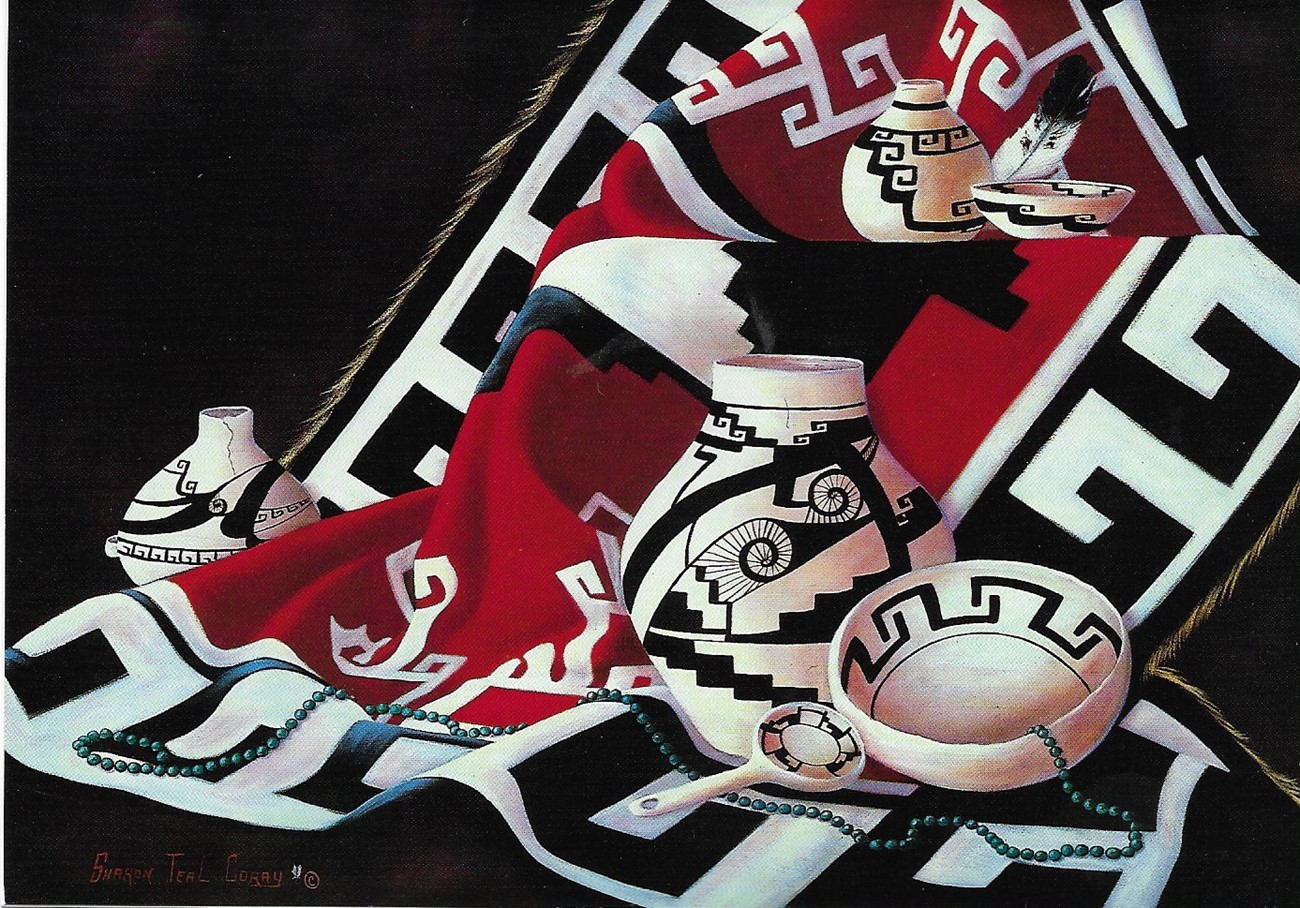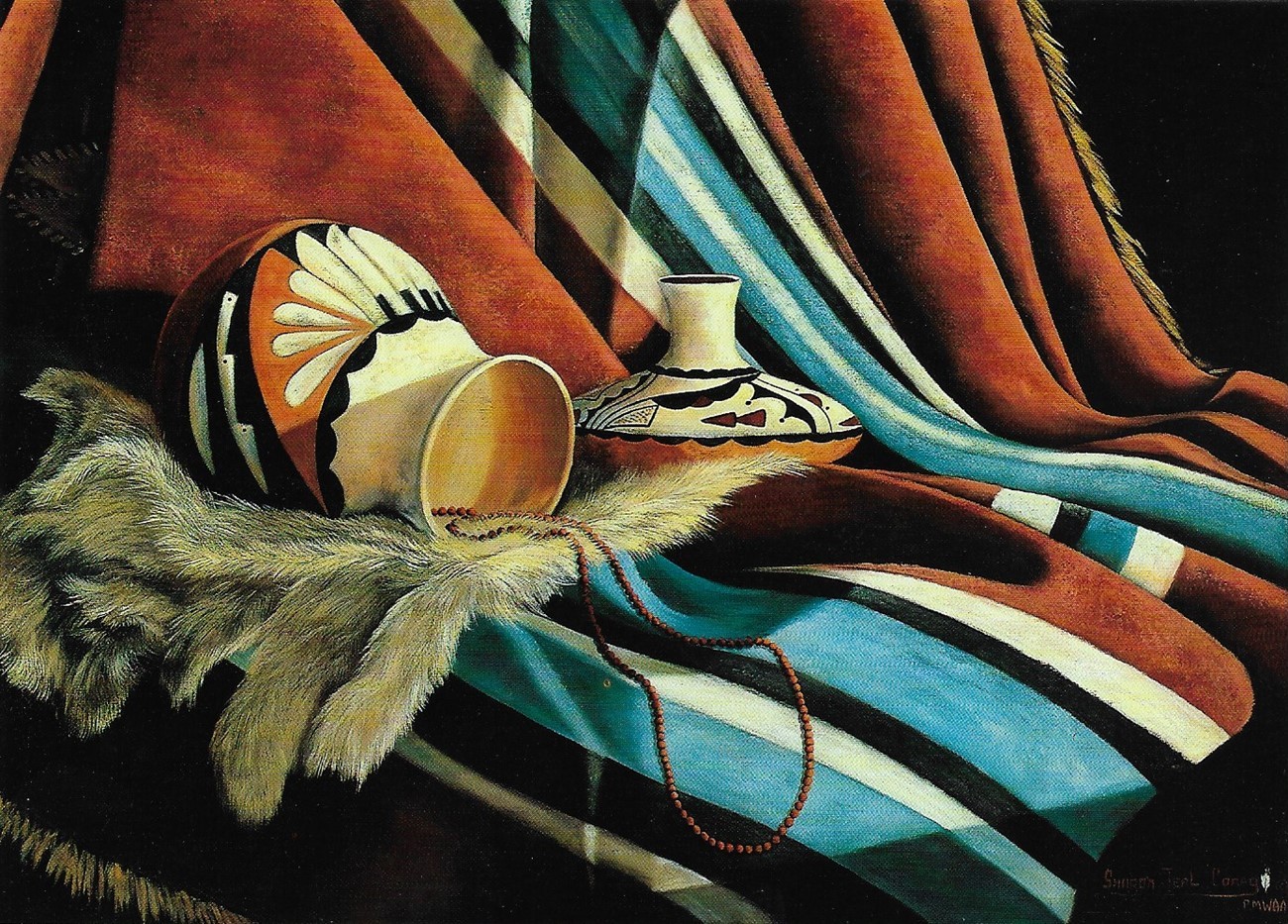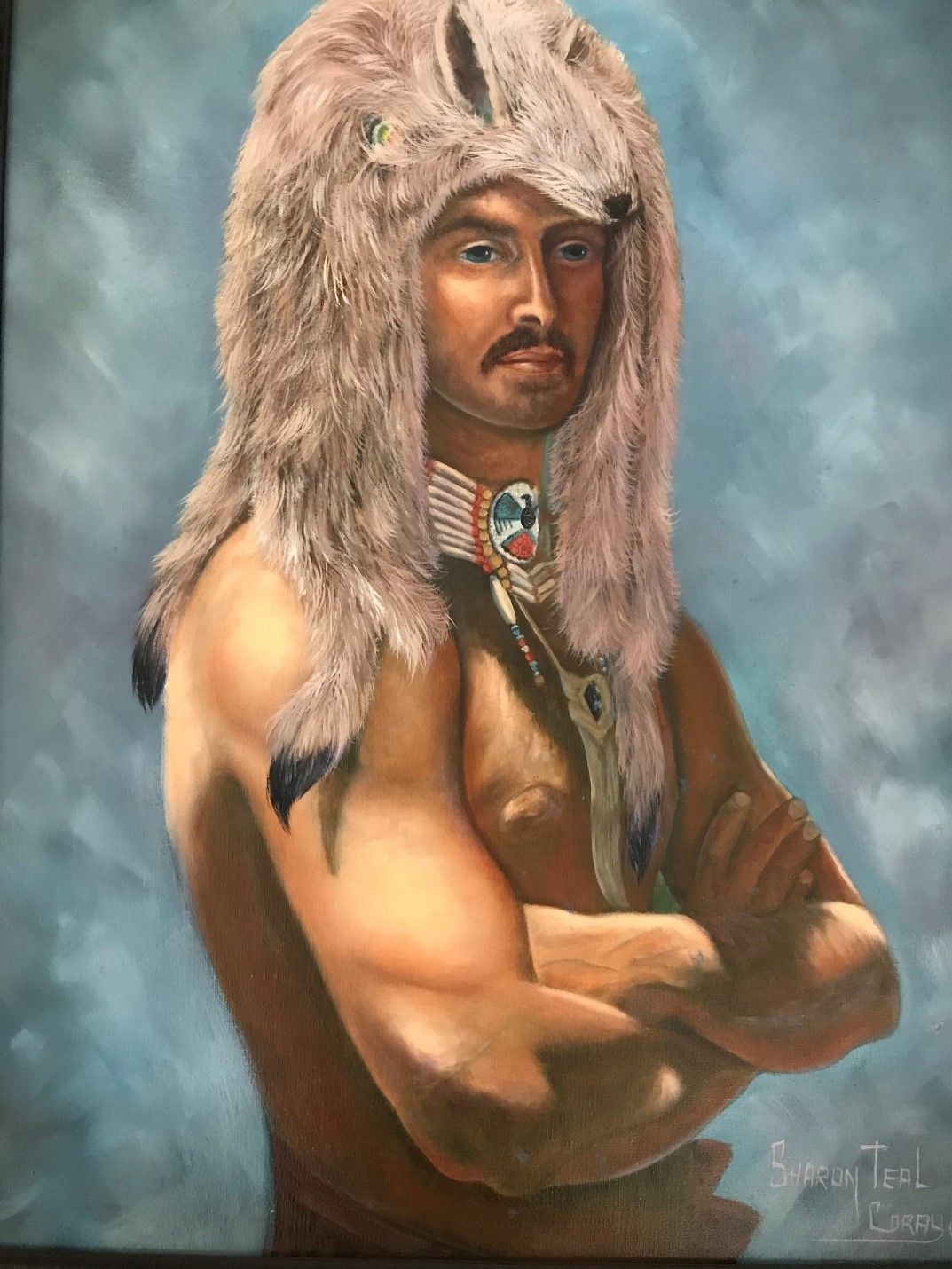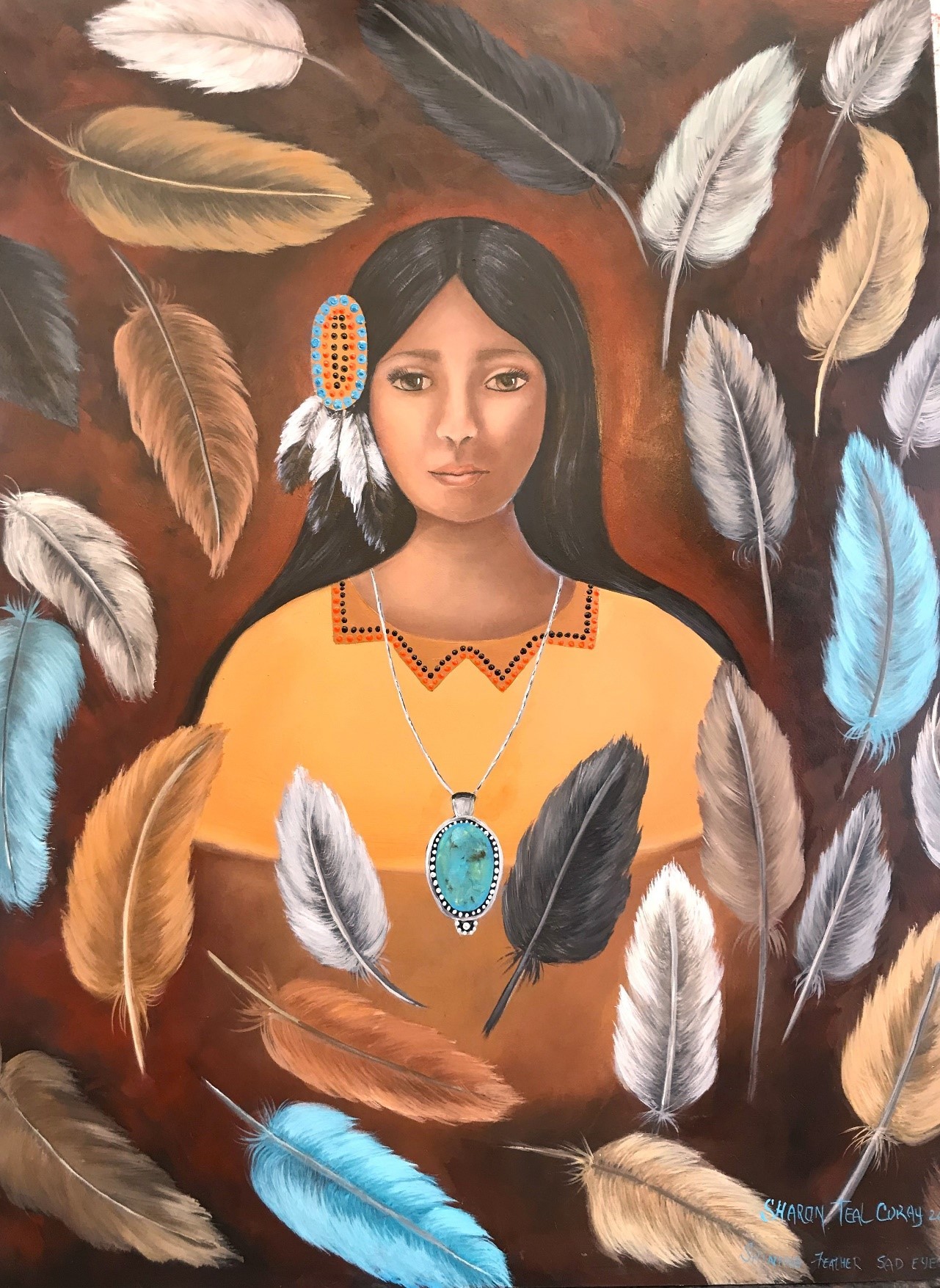Alright – so today we’ve got the honor of introducing you to Sharon Teal Coray. We think you’ll enjoy our conversation, we’ve shared it below.
Hi Sharon Teal , thanks for joining us today. Learning the craft is often a unique journey from every creative – we’d love to hear about your journey and if knowing what you know now, you would have done anything differently to speed up the learning process.
I always wanted to be an artist, my father was a commercial artist but in 1943 he was drafted into the army and went to war. Somehow he managed to take his watercolors and paper with him and recorded things he saw in Europe. I loved looking at his artwork and told him I was going to be an artist when I was in high school he told me to forget it because it would be a waste of my time. This did little to discourage if anything it pushed me to succeed!
I was married very young and after my last child was a year old I decided to get on with my art, I took a night class at the local high school but it was not helpful as the class was so big that I rarely saw the teacher. Then I signed up for some local workshops. But I found these to be all the same, not really helping me. At this point, I knew what I needed to do, head to the library and check out all the books and art that I could. I did just that, I eventually read every art book they had to offer, studied all the basics of painting, and practiced every day to improve my skill. I knew that I had to keep learning and working because you cannot become an artist overnight. It takes years to accomplish it. When I found my favorite subject of Native American Indian pottery I took a class at the University on ancient pottery making. I also traveled to the four corners area researching and learning about the Natives of the area. I went to most of the ancient ruins in the southwest. When I wasn’t painting I was reading and doing research. I somehow knew that I needed to know all I could about my subject to paint it.



Sharon Teal , before we move on to more of these sorts of questions, can you take some time to bring our readers up to speed on you and what you do?
After I had been painting for about 6 years, a neighbor saw one of my paintings and asked me if I would teach her to paint. I had always loved to help others and I said yes within a few months I had 10 students in my basement learning how to paint. My classes were not the typical “paint-along” classes like the TV artists, I wanted to teach my students the basics, I wanted them to develop their own style not be a copy of me. I taught them the basics, they learned why and how to do things. The paint-along teachers had the students copy what they painted, never teaching them what they needed to know to advance and in the end, this would get boring for them and they ended up in my class to learn more. After this, I started getting more students and eventually built a very large studio on the back of my home.
Now I had over 80 students a week. I loved teaching but I still wanted to do more with my art. I had painted every subject and found that I loved doing portraits of Native American Indians and Mountain men the best. So once again I had to find out all I could about these, my family and I would go to the local Mountain Man Rendevous and Pow Wows so I could get photo references. After I had done many of these paintings I discovered the Native Pottery still-life paintings I still paint today. I was fortunate to meet a man in Park City Utah that owned a gallery and store and let me borrow beautiful blankets and pottery to use for my paintings.
At this point, I decided to start entering some local art exhibits, but I was rejected a lot. finally, a friend of mine who was an artist told me that most of the judges in Utah were all of the same religion, which I was not, and that was possibly the reason. So I sent the same paintings out of state to other shows and got accepted and even won awards on paintings that were rejected here in Utah.
After I started winning awards I took a big leap of faith and sent a painting to the annual C.M. Russell Art Auction and Exhibit in Great Falls MT. At this time it was the biggest western art auction in the US. To my amazement, I was accepted. This was the jumping-off point for me, I was going to realize my dream of being an artist.



Is there something you think non-creatives will struggle to understand about your journey as a creative?
I know that if you really want something in this world you can get it, but you need to work hard for it. You can climb the ladder of success, but you cannot skip a rung. My motto for my students was “ No Talent Needed. Just Desire” I had a man once ask me how long it took me to paint a certain painting, my answer was; 10 years. By the look on his face, he was shocked, but what he did not realize was that it took me 10 years of challenging work, painting every day, and studying to be able to paint that painting!
Over the years I had many students come to class wanting to learn but were sure they had no talent. It only takes one person to tell you that you can’t draw to stop you in your tracks. It can happen when you are a child and your teacher says that your trees don’t look like trees! People don’t realize how this can stunt a creative person. I saw it many times in my classes. But I also saw these people who thought they had no ability to paint go on to win awards and even become teachers themselves. They have found that artists may be less likely to develop degenerative brain diseases – and if they do, they seem to be able to retain more capability for longer than non-artists. Art has a long-term positive effect on the brain. Doing anything that is creative is a stress reducer! You don’t have to be an “artist” to be creative and reap the benefits, even coloring in an adult coloring book reduces your stress level.


What do you find most rewarding about being a creative?
The most rewarding aspect of being an artist is sharing my work and knowledge with others. I have been in many galleries all over the west and southwest, and I have sold many paintings to people all over the world. I feel very blessed to have had the ability to paint and teach others. And as I approach the age of 80, I am doubly blessed to be able to sit in my wonderful studio and paint, it keeps me young! God gives us all certain talents and I believe they should be shared. My southwestern still-life paintings are sort of a tribute to the ancient Native Indians; the artifacts in my paintings were used daily as practical tools for centuries. I have always found it fascinating that these primitive people, struggling to survive had the time and creative urge to produce such beautiful works of art. Each pot or blanket I paint has a story and a spirit of its own. If they could speak, imagine what we could learn about their creators. It is extremely rewarding for me to know that these beautiful blankets and pots I have painted have given people all over the world the opportunity to own a part of the southwest culture that is rapidly disappearing in this modern age.
Contact Info:
- Facebook: Sharon Teal Coray
Image Credits
Copyright Sharon Teal Coray 2022


